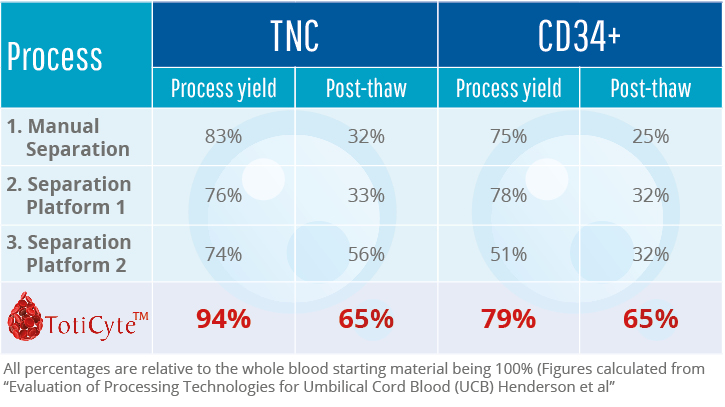What makes Cells4Life stand out as industry leaders?
Cells4Life was founded back in 2002 by our Chief Scientific Officer, Dr Jeff Drew BSc PhD. Jeff holds a PhD in molecular virology and has 25 years of experience in microbiology, cancer and genetic research and has almost 30 patents to his name. Due to his background, Jeff understood the importance of umbilical cord blood banking and while expecting his first child, Jeff went to find a suitable cord blood bank to store his first-born baby’s stem cells. However, Jeff was unable to find a cord blood bank which met the strict criteria he was looking for and so Jeff created Cells4Life.
Not only is Cells4Life born from one man’s desire to provide his family with the best cord blood storage available, it was created as a science-led organisation.
Cells4Life is passionate about enabling parents to make a fully-informed decision when deciding to bank their baby’s umbilical cord blood; we facilitate this by providing substantive clinical, scientific and evidence-based information available to parents. As an organisation, Cells4Life works incredibly hard to set and raise standards in the testing, processing and assessment of these precious cord blood samples.
How is Cells4Life changing cord blood banking?
Passionate about cord blood, we want to see more samples being stored and that includes reducing the amount of discarded samples in public banks too. Currently, 80-90% of donated cord blood samples are discarded by public banks due to insufficient volume of stem cells in the samples donated, usually caused by current processing technologies. However, TotiCyteTM, developed by Cells4Life, could revolutionise the whole cord blood banking industry and improve cord blood storage across the board.
Volume reduction is the current technology employed and preferred by most cord blood banks (not Cells4Life, however, even though we do offer this option). Volume reduction uses a centrifuge to separate red blood cells and plasma, which are of no use in a stem cell sample, from the stem cells; this also reduces the volume of the sample, for example, from 100ml to 25ml.
Unfortunately a side-effect of volume reduction technologies is a loss of stem cells, in some cases a loss of up to 40% and in some instances an almost total loss of stem cells with low abundance but of potential importance [1]. In addition to the serious loss of stem cells, a significant level of red blood cells remain, the very thing that volume reduction is trying to eradicate, which can be up to 30% of the starting concentration [2].
Developed by Cells4Life, TotiCyteTM selectively removes the red blood cells in cord blood and yields:
• over 95% recovery of the white cell fraction,
• 99.5% removal of the red cells,
• removes the need for washing to remove DMSO and red cells, and
• exceptionally high post thaw viable cell recovery [3]
Using a mixture of compounds already commonly used in blood product processing, TotiCyteTM causes the red cells to selectively sediment within 30 minutes of being added to cord blood while white cells remain in solution. The white cells can be easily removed from the red cells by means of gentle centrifugation creating a sample of a smaller volume and with less than 0.5% of the original red cell content.
In addition to the improvements made while processing cord blood samples, TotiCyteTM also greatly reduces the amount of cells lost after thawing from cryopreservation, meaning more cells available for use in therapies.
How will ToticyteTM positively impact the cord blood banking industry?
•Cord blood processing with TotiCyteTM will be cheaper than current methods.
•Fewer donations will be wasted because the higher cell yield enables many more collections to meet the threshold for storage.
•More high TNC cord blood units in storage means more units that are desirable to be purchased for transplant.
•Building the inventory of high TNC cord blood units also means that heavier patients can be transplanted, moving the therapeutic use segment from primarily children to adults.
•TotiCyteTM‘s high TNC yield should enable only one cord blood unit to be used for larger adults, obviating the need for very expensive double cord blood transplants. [3]
Through increasing access to cord blood banking through our private stem cell bank and by creating products such as ToticyteTM, which reduces the waste of donated cord blood samples, Cells4Life is committed to improving the levels of cord blood samples stored across the world – benefiting the global community.
[1] Lapierre, V., Pellegrini, N.,Bardey, I., Malugani, C., Saas, P., Garnach, F., Racadot, E., Maddens, S., & Schillinger, F.
Cord blood volume reduction using an automated system (Sepax) vs. a semi-automated system (Optipress II) and a manual method (hydroxyethyl starch sedimentation) for routine cord blood banking: a comparative study.
Cytotherapy. 2007; 9(2):165-9. PMID: 17453968
[2] Bhartiya, D., Shaikh, A., Nagvenkar, P., Kasiviswanathan, S., Pethe, P., Pawani, H., Mohanty, S., Rao, A., Zaveri, K. & Hinduja, I. 2012.
Very Small Embryonic-Like Stem Cells with Maximum Regenerative Potential Get Discarded During Cord Blood Banking and Bone Marrow Processing for Autologous Stem Cell Therapy
Stem Cells and Development. 2012; 21(1):1-6.
[3] http://parentsguidecordblood.org/newsletters.php#toti accessed 15/07/2015.









